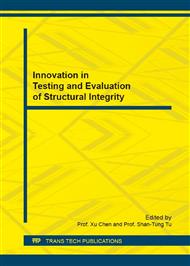p.209
p.216
p.221
p.226
p.231
p.236
p.241
p.246
p.251
Numerical Investigation on Creep Crack Growth of Brazed Joint Using Different Damage Models
Abstract:
In this paper, four types of creep damage models (Kachanov-Robotnov, Liu-Murakami, Cocks-Ashby and Wen-Tu model) were used to study the creep crack growth (CCG) behavior in compact tension (CT) specimen of Hastelloy C-276/BNi-2 brazed joint. The results show that the creep damage model has a great influence on the CCG behavior of brazed joint. The crack-tip stress states, da/dt-C* curves, crack initiation time and rupture life are different for the different damage models. The Kachanov-Rabotnov model can lead to higher CCG rate and shorter rupture life, while the Cocks and Ashby model can reduce CCG rate and prolong the rupture life. The model order in terms of the CCG rate from high to low is K-R, L-M, W-T, C-A model, which is opposite order of crack initiation time. In the simulation of CCG of brazed joint, a precious damage model should be employed for life prediction.
Info:
Periodical:
Pages:
231-235
Citation:
Online since:
September 2016
Authors:
Keywords:
Price:
Сopyright:
© 2017 Trans Tech Publications Ltd. All Rights Reserved
Share:
Citation:


